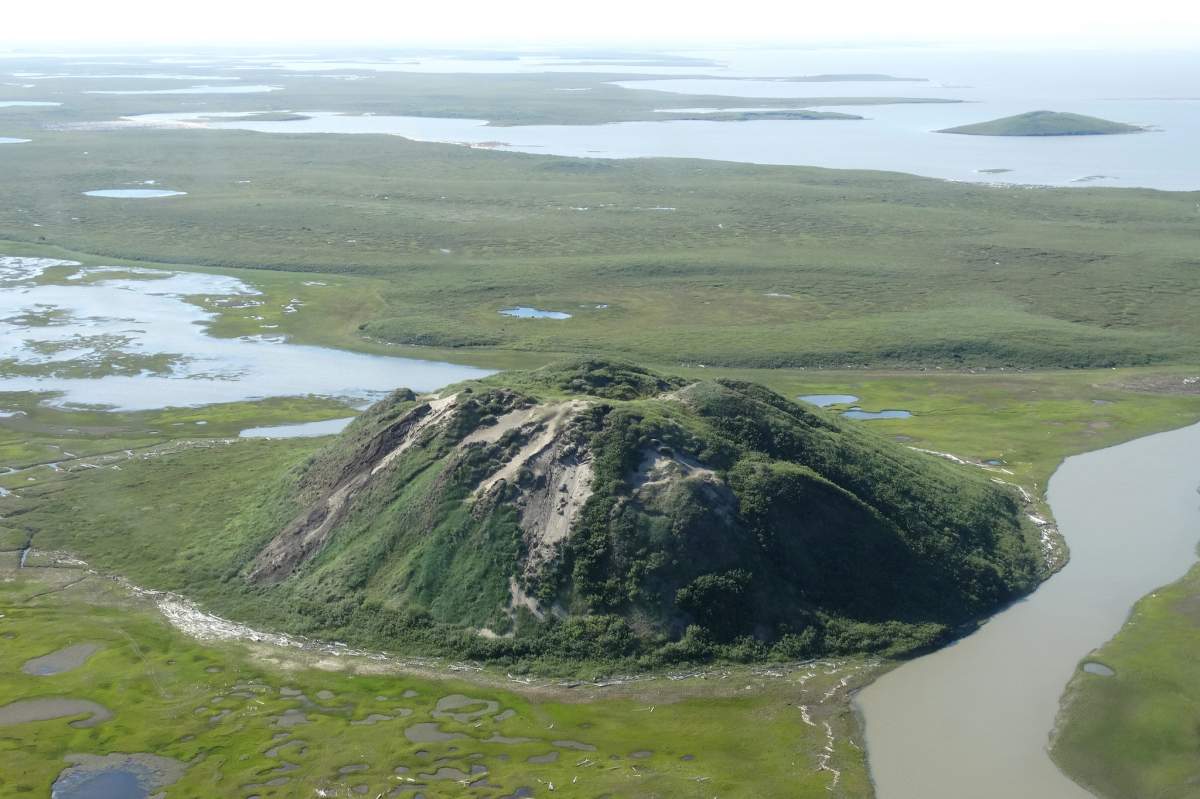
Hydrostatic Lumps
Pingos are giant lumps of ice that look like small mountains. They are circular or elliptical formations that form in the permafrost and grow up to 230 feet in height and 2,000 feet in diameter.
Pingo ice comes from two sources. Hydrostatic or closed-system pingos form in drained lakes or river channels. As permafrost rises toward the unfrozen floor, water is expelled above it. That water turns into an icy core. The shape and size of the pingo is determined by the previous water body, round shaped in lakes and more elongated in rivers.
So, the water freezes between the permafrost and the ground above.
Hydraulic Bumps
Other pingos are hydraulic or open-system pingos. They form when groundwater flows in from an outside source. They are usually found at the base of slopes. The groundwater is under pressure and forces the ground up, making an expanding ice core. Those pingos are usually oval or oblong-shaped. Sometimes if the water pressure is high enough, it can lift the original pingo up and another sub-pingo can form beneath it.
The ground above the icy core acts as insulation. If it erodes or is removed by human activity, then the ice below will begin to melt and the pingo will collapse forming a crater.
Read More:
"Pingo Canadian Landmark" (Parks Canada)









